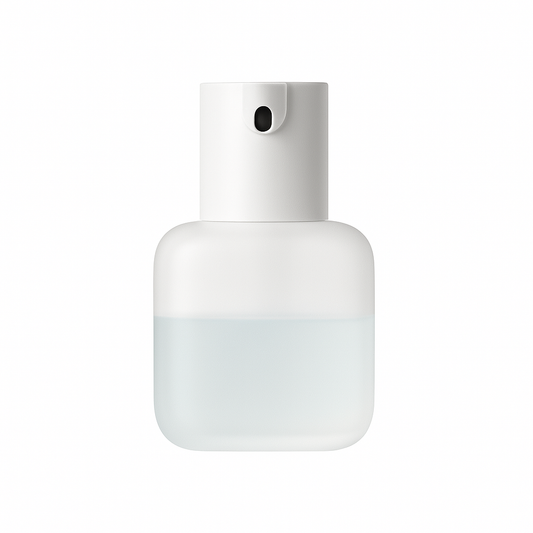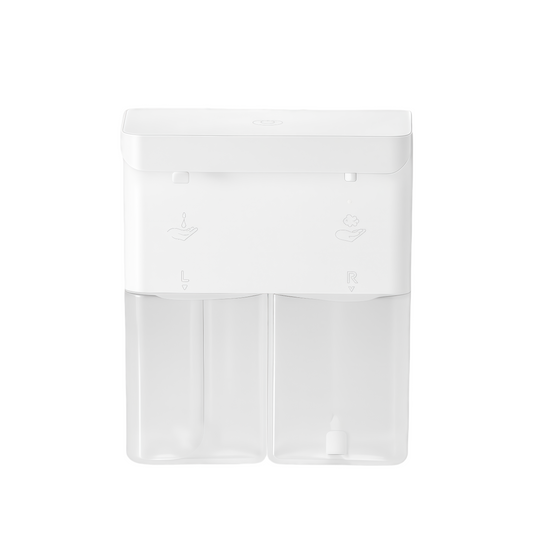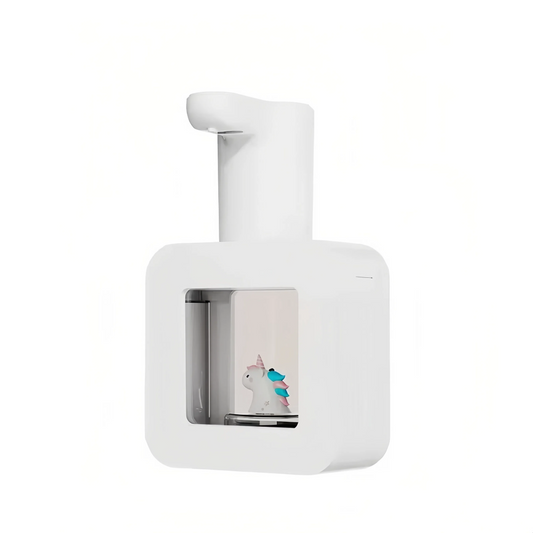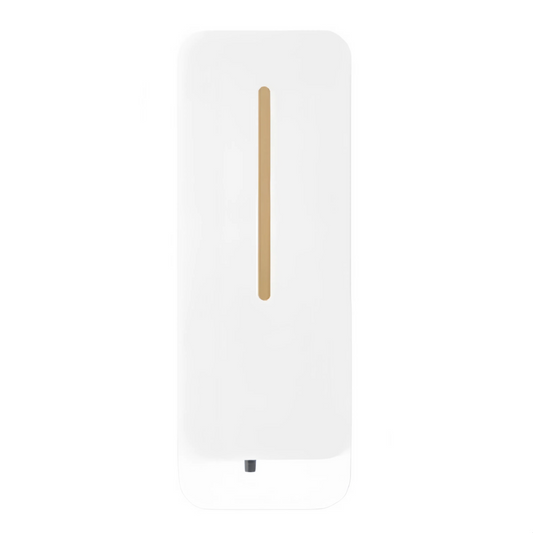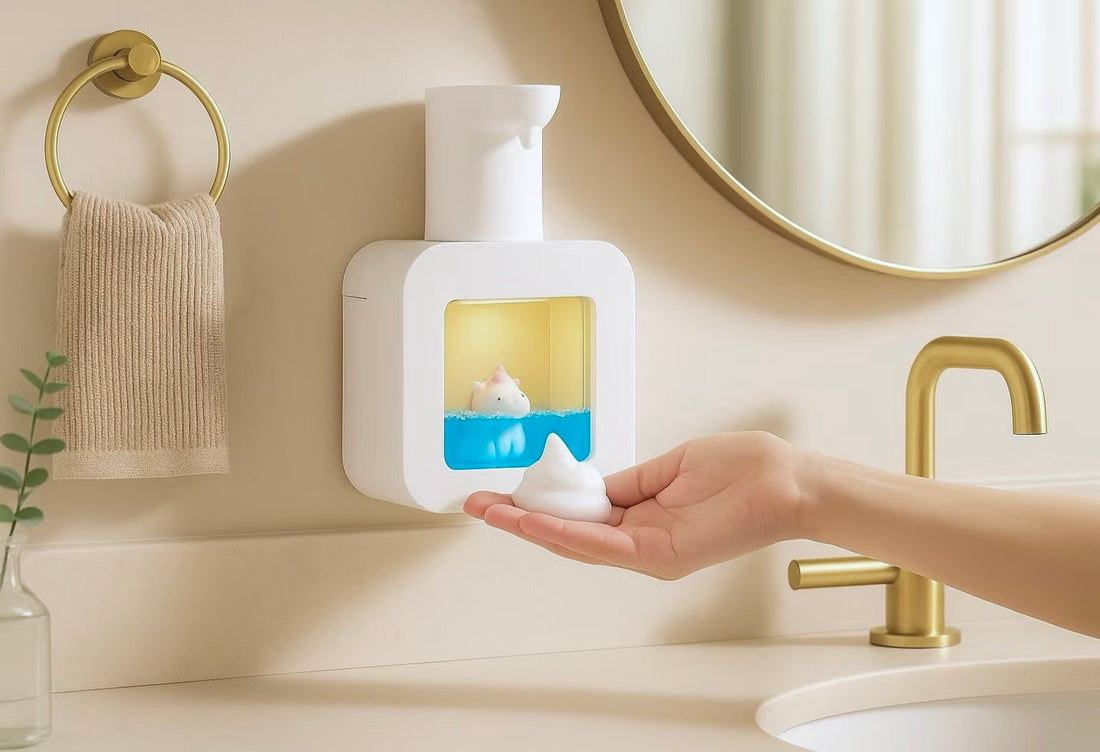
What Kind of Soap for a Foaming Dispenser? A Complete Guide
Share
Foaming soap dispensers have become a popular addition to kitchens, bathrooms, and public restrooms due to their sleek look, economical use of soap, and luxurious foam. There’s many in the market, of which a few highly recommended options can be found here. Although, to get that rich, bubbly lather, using the right kind of soap is essential. If you’re wondering what kind of soap is best for a foaming dispenser—or whether you can use regular soap—this guide will walk you through everything you need to know.
How Foaming Soap Dispensers Work
Foaming soap dispensers are designed to mix air, water, and soap in a specific ratio to create foam. Inside the pump mechanism, soap is drawn from the container and combined with air and a small amount of water. This mixture is then forced through a mesh screen, turning it into a soft foam as it's dispensed.
Because of this design, the consistency of the soap matters. If it’s too thick, it can clog the pump. If it’s too thin, it might leak or dispense watery foam.
Best Soap Types for Foaming Dispensers
1. Foaming Hand Soap Refills (Pre-Diluted)
These are specifically formulated for foaming dispensers. They have the perfect viscosity and lathering agents to produce foam without clogging the pump.
Pros:
No dilution required
Formulated for optimal performance
Available in various scents and formulations (e.g., antibacterial, moisturizing)
Cons:
More expensive than concentrated soap
Less customizable
Best for: Homes, offices, and commercial settings where convenience is a priority.
2. Liquid Castile Soap (Diluted)
Castile soap is a plant-based, biodegradable soap that’s ideal for sensitive skin and eco-conscious households.
Dilution Ratio: About 1 part soap to 4 or 5 parts water, depending on your dispenser and preferred foam consistency.
Pros:
Natural and eco-friendly
Customizable with essential oils
Budget-friendly in bulk
Cons:
Requires mixing
Can separate over time; may need occasional shaking
Best for: DIY users, eco-conscious homes, or those with sensitive skin.
3. Regular Liquid Hand Soap (Diluted)
You can use standard liquid hand soap, but it must be diluted to avoid clogging the dispenser.
Dilution Ratio: Typically 1 part soap to 3-5 parts water. Start with less water and adjust to desired foam thickness.
Pros:
Convenient if you already have liquid hand soap
Cost-effective
Cons:
Not as efficient or consistent as foaming-specific soaps
May contain thickening agents that clog pumps
Best for: Occasional use or budget-conscious households.
4. Dish Soap (Diluted)
Mild dish soaps like Dawn or Seventh Generation can work when properly diluted. This is especially useful in kitchen dispensers.
Dilution Ratio: 1 part dish soap to 4-6 parts water
Pros:
Powerful cleaning agents (useful in kitchens)
Affordable and easy to find
Cons:
Can dry out hands if used frequently
May contain harsh chemicals
Best for: Kitchen sinks, utility rooms, or multi-purpose cleaning stations.
What to Avoid in Foaming Dispensers
Not all soaps are suitable. Avoid:
Thick soaps like moisturizing or antibacterial hand soaps that are not designed for foaming.
Soaps with beads, scrubs, or exfoliants—they can clog the mesh screen.
High-fragrance or heavily colored soaps, which may leave residue over time.
Undiluted liquid soaps, which can damage the pump and waste soap.
If you’ve bought the wrong liquid and want to switch for a different dispenser, there’s many options to choose from - some of which can be found here.
Tips for Making Your Own Foaming Soap
If you’re into DIY or want to save money, making your own foaming soap is easy:
Basic Recipe:
1 part liquid soap (Castile or gentle hand soap)
4–5 parts distilled water
Optional: 5–10 drops of essential oil (e.g., lavender, tea tree, lemon)
Instructions:
Add soap to the dispenser bottle.
Add water slowly to avoid bubbles.
Gently shake to mix.
Cleaning and Maintenance
To keep your foaming dispenser working properly:
Rinse it monthly with warm water to clear any build-up.
If it clogs, soak the pump in a 1:1 mix of water and vinegar for 15–20 minutes.
Always shake your homemade mix before use if ingredients separate.
If you ever need a replacement, you can check out some highly recommended soap dispensers through this link.
Conclusion
Foaming dispensers are efficient and elegant, but they require the right type of soap to function properly. Whether you choose a store-bought foaming soap refill, diluted Castile soap, or a homemade blend, the key is ensuring it’s thin and free of particles. With proper use and maintenance, your dispenser can provide a luxurious foaming experience for years to come.

